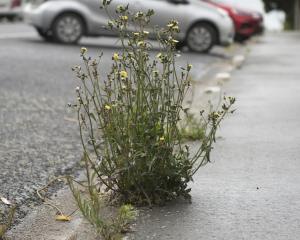
Vegetables
Take advantage of fine spring days to sow vegetables.
Frequent hoeing and loosening of the surface soil helps all crops, enabling air and warmth to get into the upper layers of the soil.
Use spring cabbages soon, or they will run to seed. Cut the largest heads first. Once a head has been cut, the plant should be removed and composted. Left in the ground, the plants will continue to draw nutrients from the soil.
Sow lettuce regularly from now on, a few at a time, to keep a regular supply through the coming months. The best lettuce plants are those sown where they are to mature. Thin the seedlings so those left to mature will produce a highly developed root system. Liquid manure helps give good leaves.
Rhubarb will be starting to sprout, but leave the early stalks to mature and water the bed well in dry weather.
Watch any early potatoes now pushing through the surface in areas where frosts might still occur. Cover with pea straw or hoe up some soil over them and, when they become strong, mound them up. This month, main-crop potatoes can be sown in districts that usually experience dry summers.
Thin autumn-sown onions and weed the bed when soil conditions allow.
Flowers
Plant pansies and violas. Regularly remove faded flowers and seed pods to prolong the flowering displays, a practice also invaluable with other annuals and perennials, such as dahlias, sweet peas, asters, roses and calendulas.
Dahlias left in the soil during winter can be lifted and divided for replanting during the next four weeks. Lift clumps of tubers with a fork and, with a sharp knife, remove individual tubers, ensuring each has a large piece of stem with a sturdy growth bud attached. Before replanting, add plenty of compost or well-rotted stable manure. Add lime, at the rate of 100g a square metre, and replant the tubers with the growth bud about 5cm below the surface.
Plants suitable for damp spots in the garden include Astilbe, globe flower (Trollius), Himalayan blue poppy (Meconopsis), perennial phlox, primulas, japonica, leopards bane (Doronicum), Anemone japonica, lily of the valley, Solomons seal, hellebores and penstemons.
Roses should have been pruned by now. If not, this should be done as soon as possible or flowering will be late and blooms disappointing.
When bulbs grown in pots for indoor or patio displays have finished their flowering, plant them in a corner of the garden to recuperate. It will probably take a year or two before they will flower properly again.
Fruit
The season for planting tomatoes under glass is almost here. Unless you have the luxury of a heated glasshouse or a sunny conservatory that stays warm overnight, do not be in a hurry to put in tomatoes. They are a subtropical plant from lowland South America, cultivated for at least 1500 years, and taken to Europe about 1530.
Modern tomatoes come in two types, bush (determinate) and indeterminate. Determinate varieties, such as Beef Boy, are bred to grow to a compact height, usually about 1.5m. They stop growing when fruit sets on the terminal or top bud, ripen all their crop at or near the same time (usually over a two-week period), then die.
Indeterminate tomatoes are vines that continue growing in length throughout the season and include many of the small-fruited varieties.
Whatever type you choose, if buying plants, look for sturdy specimens about as tall as they are broad and with mid- to dark-green leaves.
If tomatoes are grown in the ground, fresh soil or tomato mix is needed every year, so growing them in pots or heavy black plastic bags is more economical. Set plants about 1m apart and do not over-water until they are well established.







